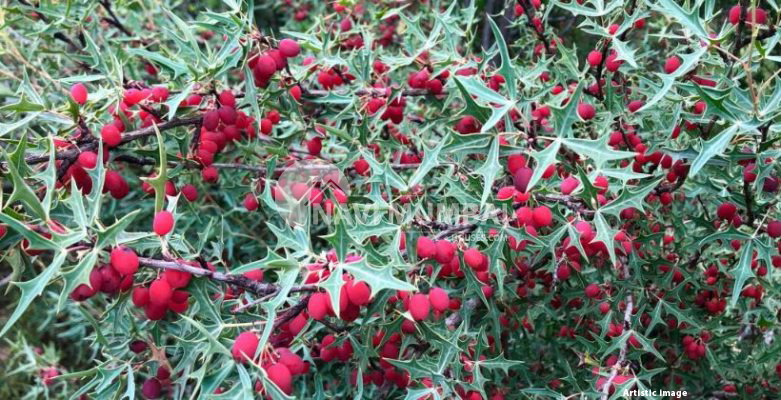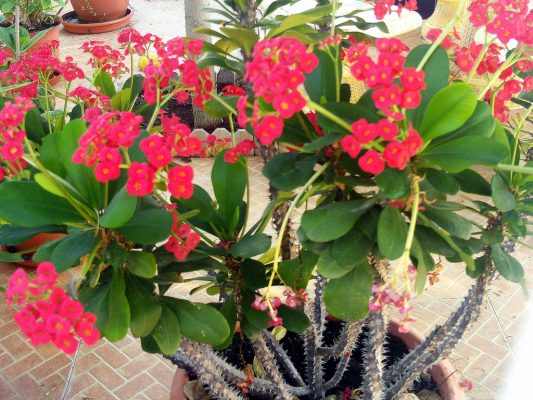
- November 17, 2022
- News
How To Grow & Handle Thorny Plants
Thorny plants are an unusual choice for a houseplant, but they are very popular as garden and indoor plants.
Although thorny plants may not appear to be the most appealing group, they do include many popular garden and houseplant options. There are numerous decorative plants with thorns or spiky foliage. If you plant them in the right place, they can provide additional protection to your property without the use of barbed wire or expensive fencing.
If you want to spice up your garden or protect it from intruders, you should read this article about thorny plants.
Are you looking flat for sale in kharghar?
What exactly are thorny plants?
Thorny plants, also known as prickly bushes or spiky plants, provide excellent privacy. Many thorny plants have long, sharp spines that serve as both a visual and functional deterrent. As landscape plants, flowering deciduous perennial thorn plants have a high level of aesthetic value. Furthermore, evergreen thorny plants serve as an excellent protective barrier and enclosure all year.
Where to grow thorny plants?
Before planting thorny plants and bushes, think about where you want them to go. If you have spiky plants, keep some space around your lawn because you don’t want any children or dogs to be injured by those vicious, pointy shrub spines. The following are some locations where thorny plants could be grown to take advantage of their defensive properties:
- Planting thorny plants and bushes near the foundation and below the windows can help keep intruders out of your home.
- Invaders can be deterred by planting a row of tall, thorny plants and blooming shrubs next to a fence or wall.
- Instead of erecting a fence, planting thorny plants in strategic locations can deter nuisance animals such as stray dogs.
How to Handle Poisonous Plants
The cultivation of thorny and prickly plants in a garden necessitates special care. The spines on thorny plants are frequently long and rigid, not to mention sharp and vicious looking. Furthermore, some defensive plants’ thorns contain irritants. As a result, when working with a thorn bush, you should wear protective clothing and gloves.
When trimming, transplanting, or dealing with a thorny plant, wear puncture-resistant gloves. Safety glasses are also required when pruning thorny branches. Additionally, shoes or boots with thick bottoms protect the wearer from sharp spines.
Types of thorny plants
Let’s take a closer look at the various thorny plants that can be grown for safety or defence.
Thorny Bougainvillea Bushes and Vines
Bougainvillea is a magnificent flowering plant with broad, sweeping thorny branches that bloom all year. A bougainvillaea vine, with its sharp thorns, is an excellent deterrent to wall or fence climbing. The thorny stems can cling to buildings or other plants, and the vine can spread to a length of 24 feet (12 metres).

Plants with a thorny crown
The Crown of Thorn Plant is a medium-sized shrub that blooms and is prickly. This thorny shrub is distinguished by its round, crimson or pink bract blooms and bright green foliage. Because its sharp spines can grow up to 2.5 cm in length, the thick-stemmed shrub is used for security.
Firethorn Thorny Shrub
Firethorn shrubs are tall, thorny evergreen hedge plants with short, oblong evergreens, white bloom clusters, and orange, red, or yellow berries. The thorny shrub’s dense prickly texture makes it useful for lining borders, acting as a protective barrier, or standing alone as a decorative plant. Firethorn shrubs can grow to heights of 6 to 16 feet (1.8 to 5 m).

Shrub of Thorny Rose
Rose bushes with thorns are beautiful floral shrubs, but the sharp thorns on their sturdy woody canes can be dangerous. Rose bushes, also known as “shrub roses,” are thorny, sprawling plants that thrive in a wide range of soil conditions. A rose bush’s pink flowers are follow by large orange rose hips. Thick, thorny rose bushes can grow to be 4 feet (1.2 metres) tall and 6 feet wide (1.8 metres).

Agarita
The agarita bush is a perennial plant with bright red berries and holly-like prickly leaves. Agrita shrubs, despite their thorny reputation, are quite attractive due to their rounded, spreading form, grey-green leaves, little yellow cup-shaped blooms, and red berries. Agrita shrubs can grow to be up to 6 feet tall and wide in their natural habitats (0.6 m and 1.8 m).

Japanese Barberry
Japanese barberry is a tenacious hedge shrub with small oblong leaves, yellow blooms, microscopic prickly spines, and bright red berries. This thorny plant, also known as red barberry or Thunberg’s barberry, has spines that form at the leaf joints. The barberry can grow to be 1-3 feet (0.3-1.8 metres) tall and 2.1-7 metres wide.

Quince (Chinese Quince)
The Chinese quince is an evergreen, multi-stemmed thorny plant with thorny, woody twigs, pinkish-white or red blooms, and apple-like berries. Early in the spring, quince plants bloom with bare, thorny stems. The enormous spines on the branches become visible in the fall through the oblong, deciduous leaves, which have turned a deep crimson colour.
The sea buckthorn
Sea buckthorn is a thorny, deciduous shrub that can survive in cold climates. It has silvery-green leaves and bright yellow berries. The maximum height and width of a sea buckthorn plant are about 12 feet (2.4 m). The multi-stemmed shrub’s orange-yellow berries last into winter, increasing the shrub’s aesthetic value.
Spiky Common Hawthorn Shrub
The typical hawthorn is a small tree or shrub with flowers and thorns. The thick growth, sharp 2.5 cm thorns, and low maintenance of hawthorn make it an excellent choice for a protective hedge. A hawthorn bush can grow to be 15 feet tall or 45 feet tall (5 to 14 metres).
Spicy Blackberry Shrub
Blackberry bushes are tough defence plants that produce a bumper crop of blackberries on tall, arched, prickly stems. Depending on the season and your location, scraggly blackberry bushes can have either everlasting or deciduous leaves. In the spring, you can see flowers with five petals, which will eventually turn into edible fruit.
Thorny Plants- Common Holly
Holly is an evergreen hedge shrub with pointed, spiny leaves and bright red berries. Spiky leaves are a primary protective mechanism for holly shrubs because they prevent animals from navigating through the undergrowth. Holly bushes can grow to heights of 2.1 to 3 metres and widths of 7 to 10 feet.
Thorny Plants- Spiked Blackthorn
Blackthorn is a large deciduous shrub with a slew of sharp prickles strewn across its rigid branches. Sloes are the bluish-black drupes found on the thorny plant. Because they are low-maintenance and prickly, the thorny branches of the blackthorn plant are ideal for use as a garden barrier. The bushy shrub can grow up to 5 metres tall and 16 feet wide.
Thorny Plants- Porcupine Tomato or Devil’s Thorn
The porcupine tomato shrub, also known as the Devil’s thorn, has evergreen leaves surrounded by orange thorns that serve as a form of defence. One of the most appealing features of this thorny plant are its fuzzy grey, petalled leaves and upright, brilliant orange spikes. In the spring, the protective plant bursts into blossoms with lavender blooms, adding to the plant’s ornamental charm.
Thorny Plants- The Oregon Grape
As a defence mechanism, bib bushes are armed with sharp, thorny leaves that resemble holly leaves. This evergreen shrub, known by several different names, grows to be between 1 and 1.8 metres tall and as wide as it is tall.
Thorny Plants- Gooseberry with Fuchsia Flowers
The fuchsia-flowered gooseberry is deciduous and flowering, with three venomous-looking spines at each node along its stem. Because of its long, sharp, rigid spines, no living creature, human or otherwise, should ever attempt to traverse this bush. On its hanging red tubular flowers, the prickly fuchsia bush also has long, crimson stamens and fuzzy red berries.
You’re looking for Buy Home In Mumbai we have the Best Buy Properties In Mumbai Like Ready to Move & Nearby possession: https://navimumbaihouses.com/property/search/buy/mumbai-all/
If you want daily property update details please follow us on Facebook Page / YouTube Channel / Twitter


